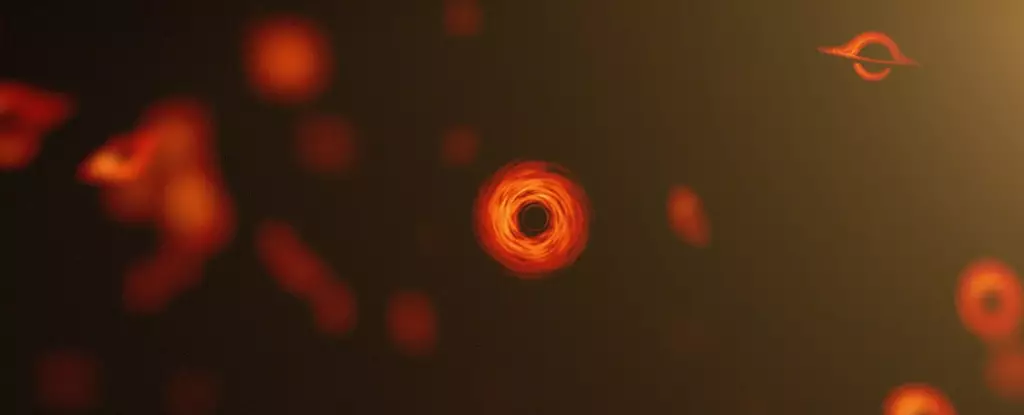Primordial black holes (PBHs) are a topic of increasing interest within the fields of astrophysics and cosmology. The concept holds that these theoretical black holes formed shortly after the Big Bang, resulting from regions of matter that became so dense they collapsed under their own gravitational pull. The significance of PBHs extends beyond mere curiosity: they are considered viable candidates for dark matter, potential sources of primordial gravitational waves, and could offer solutions to several longstanding enigmas in physics. Despite their intriguing implications, definitive observations of PBHs remain elusive, leading researchers to explore new methods for detecting them.
One of the most captivating aspects of PBHs is their potential to serve as an explanation for dark matter—an invisible, mysterious substance that is believed to make up about 27% of the universe’s mass-energy content. Traditional candidates for dark matter, such as weakly interacting massive particles (WIMPs), have yet to be detected. PBHs, on the other hand, could fulfill this role with their intrinsic properties. If indeed PBHs exist and make up a significant portion of dark matter, their discovery could revolutionize our understanding of the universe.
Moreover, PBHs could be linked to primordial gravitational waves, which are ripples in spacetime generated during the early moments of the universe. The existence of PBHs and their interactions could offer clues about these waves, which have been a focal point of research in modern cosmology.
Notable advancements in the search for PBHs have come from the work of physicists De-Chang Dai and Dejan Stojkovic. Their recent study explores innovative methodologies for detecting PBHs by investigating potential locations where these miniature black holes could reside. Specifically, they suggest that PBHs might be found within the interiors of celestial bodies such as neutron stars, dwarf stars, asteroids, and planets, where their gravitational influence may alter the density and structure of these objects.
The researchers propose a fascinating hypothesis: if a PBH were to exist in a planet or moon with a liquid core, it would consume the core material relatively quickly, potentially leaving behind a hollow structure. The results of their calculations indicate that the crust, made of resilient materials, could withstand the gravitational forces exerted by such a black hole. This gap—or microchannel—created within a solid mass could serve as evidence of a PBH’s presence and may be detectable through advanced observational methods.
In terms of detection, Dai and Stojkovic advocate for searching the universe for micro tunnels that PBHs may leave behind as they pass through solid materials. When a tiny PBH travels through a cube of material, it could create a channel with a radius comparable to that of the PBH itself. The extremely small size of these channels means they could go unnoticed in everyday materials, including glass or terrestrial rocks. Researchers could set up experiments to scan these materials for signs of PBH passage.
The scientists also suggest the use of large, polished metal plates—similar to methods employed in neutrino detection—to capture potential interactions with PBHs. Given that the expected flux of PBHs is exceedingly low, these detection initiatives would require meticulous design and execution, yet they come with the promise of groundbreaking discoveries at relatively low operational costs.
The exploration of PBHs is not a new endeavor; it has roots dating back to work by pioneers like Stephen Hawking, who theorized that black holes could eventually evaporate over time. Despite the profound implications of such theories, the field has seen a resurgence of interest, fueled by the need to address dark matter challenges and the search for evidence indicating the existence of PBHs.
Research into gamma rays emitted by potential PBHs has also emerged as a promising avenue, as cosmic rays in our galaxy’s dark matter halo may serve as an indirect signature of PBH existence. By tuning observational strategies to focus on these stellar interactions and emissions, scientists can enhance their search for these elusive cosmic objects.
The investigation into primordial black holes represents a fascinating intersection of theory and observational astronomy. Their potential to elucidate the nature of dark matter, as well as their implication for gravitational waves and cosmic structure, underscores their critical role in advancing our understanding of the universe. With innovative detection techniques on the horizon, there remains a significant hope that scientists will one day uncover the secrets of PBHs and further illuminate the cosmos’s mysteries.

